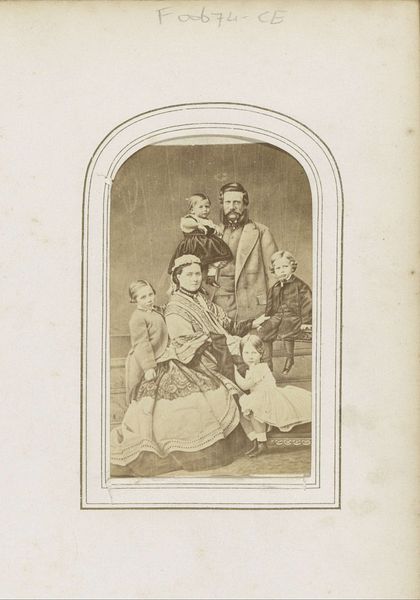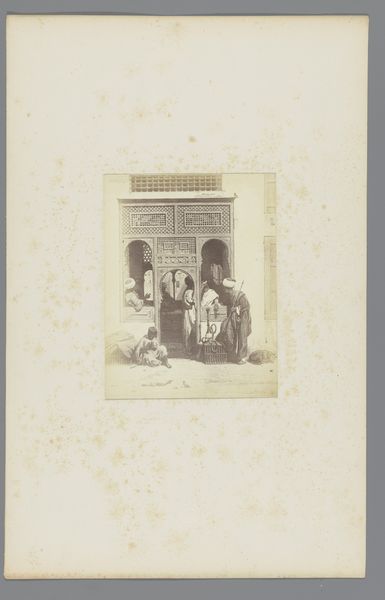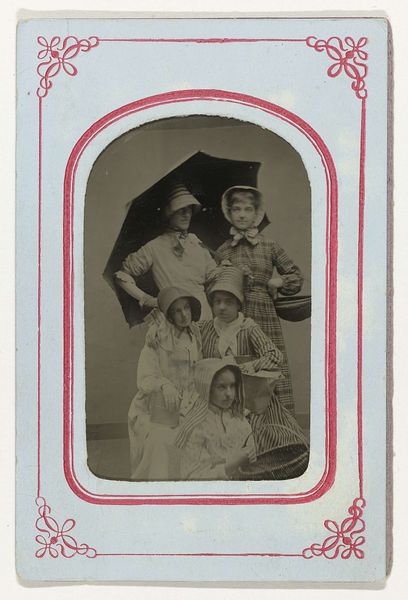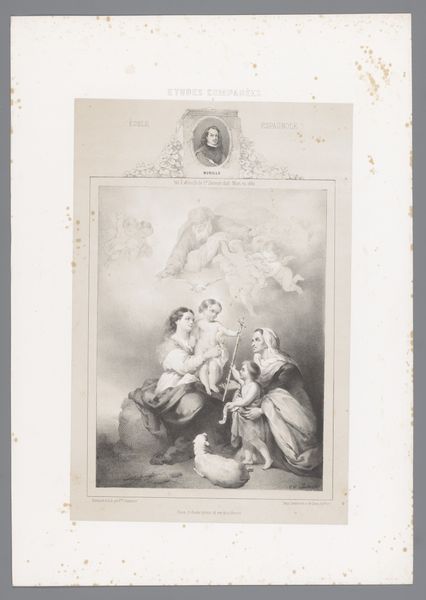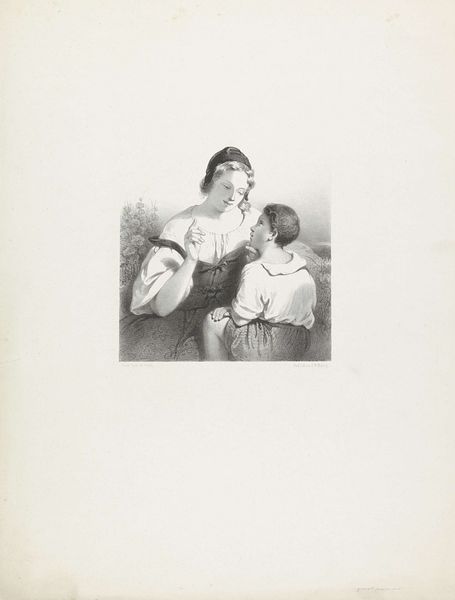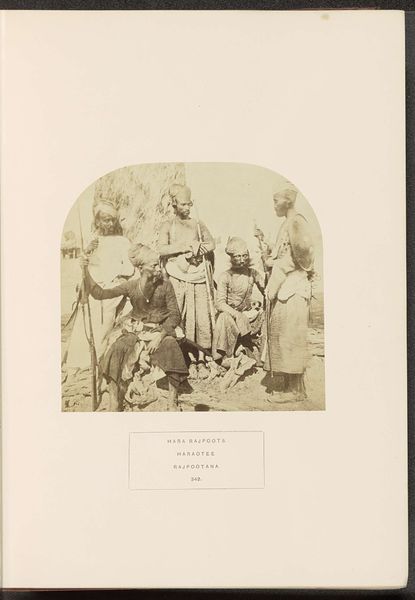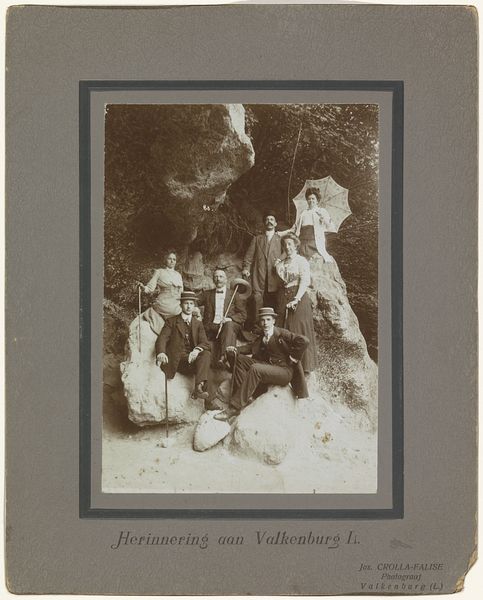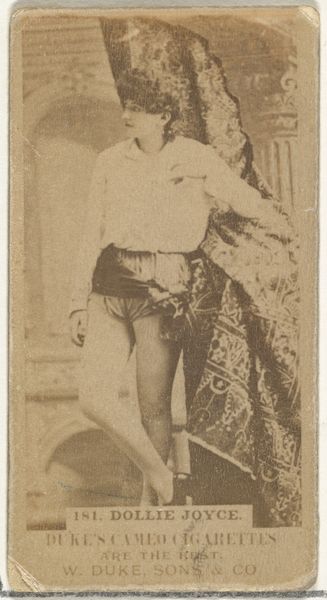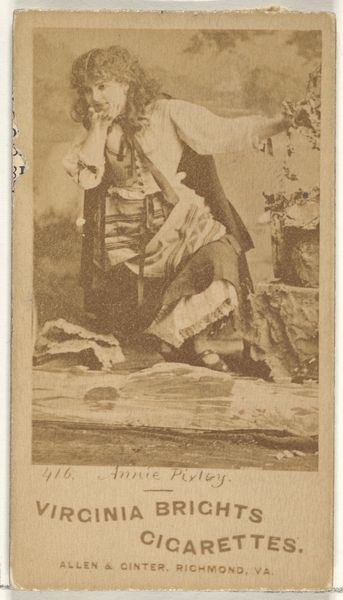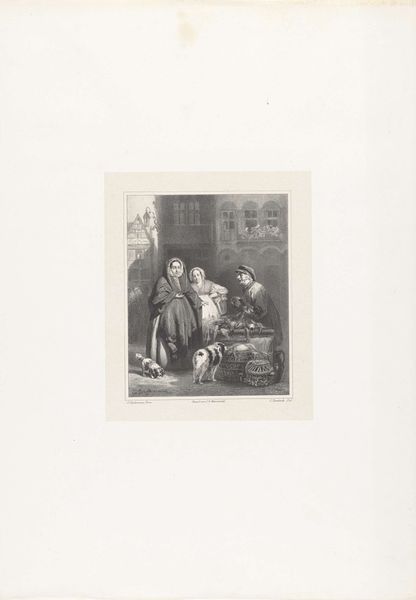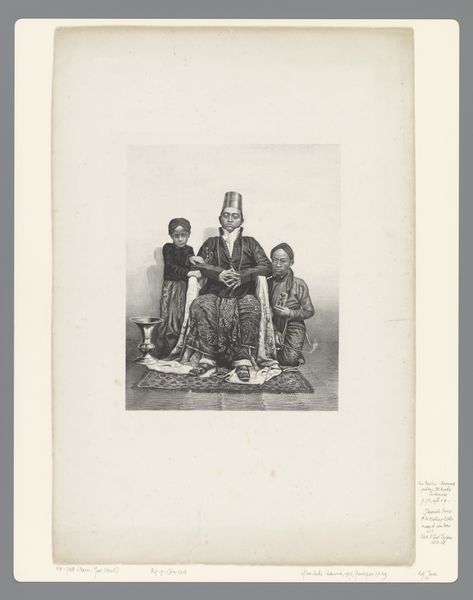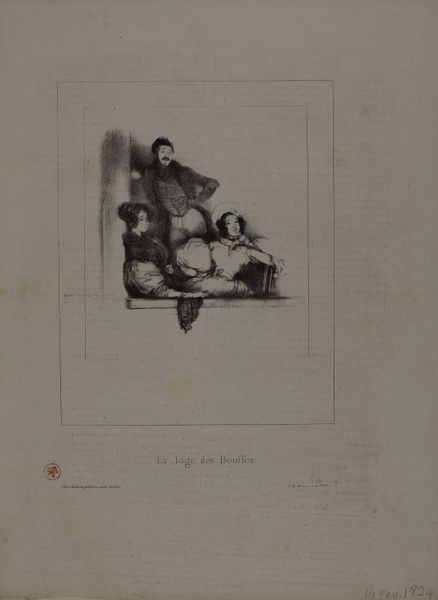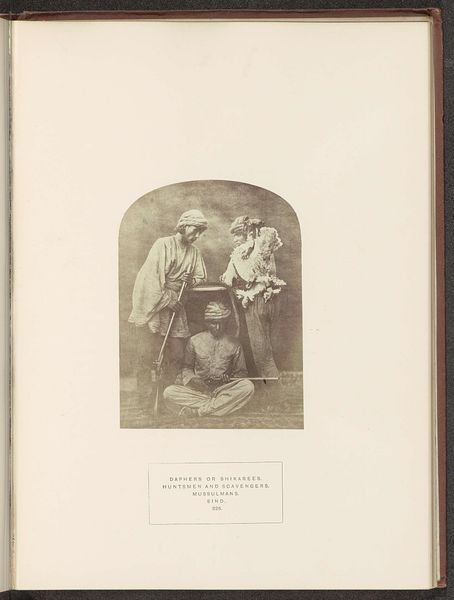
Groepsportret van het gezin van Friedrich Wilhelm, kroonprins van Pruisen, met links Wilhelm (de latere keizer Wilhelm II) c. 1864 - 1867
0:00
0:00
Dimensions: height 83 mm, width 55 mm, height 102 mm, width 66 mm
Copyright: Rijks Museum: Open Domain
Curator: This is a fascinating photograph from between 1864 and 1867, currently housed in the Rijksmuseum. It's titled "Group Portrait of the Family of Friedrich Wilhelm, Crown Prince of Prussia, with Wilhelm (the future Emperor Wilhelm II) on the left". Editor: My first thought is the texture of the clothing. Look at the intricate fabrics! I am intrigued by the material representation of status. Curator: Exactly! The opulence isn’t accidental; it visually reinforces their roles within the Prussian social structure. Consider the cultural expectations for women, evident in how Crown Princess Victoria is staged at the center. Editor: I'm thinking about how that elaborate shawl would be manufactured. Where was the lace produced? The cloth? How far did raw materials travel to construct the fabrics presented? And what kind of labor constructed all these fine textiles? Curator: Those questions provide a perfect lens to scrutinize notions of the monarchy, privilege, gendered roles, and familial representation during the Romanticism era in Prussian society. Each member of the family fulfills a pre-defined, often rigidly enforced, expectation. Editor: But this isn’t just about wealth, but its strategic display. The material becomes a tool to reinforce power and position within the empire. Curator: Absolutely. The medium of photography was gaining momentum as well and its inherent capacity to reproduce likeness democratized representation, but access to photography wasn’t yet equally available to every group in society. These choices were very deliberate, aimed at constructing and maintaining a particular image of Prussian royalty. Editor: It reminds me of how textiles operated similarly; to visually cement hierarchy through craft and display. That ornate presentation is a means of asserting not only status but also control, and the sheer excess is staggering to consider within a materialist framework. Curator: Reflecting on it, one sees the choices around familial structure, gender and power embedded within that single image of the future Kaiser’s family, with echoes through later moments in history. Editor: Considering this photograph’s emphasis on carefully displayed materials, we get a glimpse into how imperial power was both made and projected during a transformational moment in European history.
Comments
No comments
Be the first to comment and join the conversation on the ultimate creative platform.
